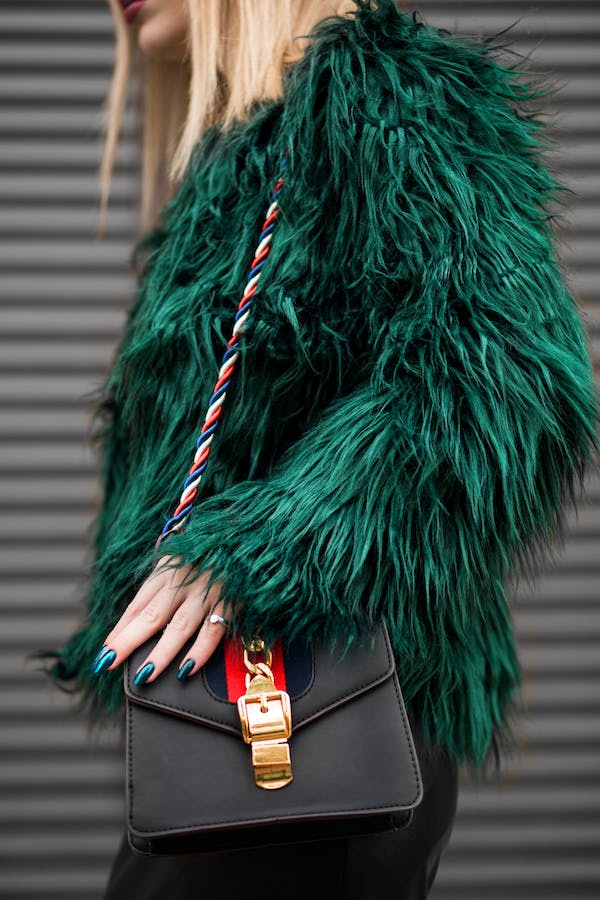Designer handbags have long been a symbol of luxury, status, and personal style. Over the decades, these coveted accessories have undergone a fascinating evolution, reflecting changes in fashion, culture, and societal norms. From the structured elegance of the 1950s to the eclectic designs of the 21st century, this article explores the diverse and ever-changing landscape of designer handbag styles.
1. The 1950s: Structured Elegance and Ladylike Charm
In the post-war era, the 1950s brought a return to femininity and sophistication. Designer handbags of this decade were characterized by structured shapes, clean lines, and a focus on craftsmanship. Iconic styles, such as the box bag and top-handle tote, became synonymous with ladylike elegance. Design houses like Chanel and Hermès set the tone for timeless, classic handbags that remain influential to this day.
2. The Swinging 1960s: Mini Bags and Youthful Freedom
As societal norms shifted in the 1960s, so did the fashion landscape. Mini skirts and go-go boots became the norm, and handbags followed suit. Designers like Mary Quant and Paco Rabanne popularized small, playful handbags that complemented the youthful spirit of the era. The introduction of the shoulder bag, a more relaxed style, also marked a departure from the structured looks of the previous decade.
3. The Bohemian 1970s: Hobo Bags and Boho-Chic Vibes
The 1970s brought about a free-spirited, bohemian aesthetic that influenced fashion, including handbag designs. Hobo bags, characterized by their slouchy silhouette and casual vibe, became a staple. Brands like Gucci embraced the boho-chic trend, introducing iconic styles like the Gucci Bamboo bag, which remains a symbol of 1970s glamour.
4. The Flashy 1980s: Power Bags and Logomania
As the '80s embraced excess and opulence, designer handbags became bolder and more ostentatious. Power bags with strong, structured shapes and conspicuous logos gained popularity. Luxury brands, including Louis Vuitton and Chanel, capitalized on the rise of logomania, adorning their handbags with prominently displayed brand logos.
5. The Minimalist 1990s: Sleek Designs and Understated Luxury
In stark contrast to the extravagance of the 1980s, the 1990s favored a minimalist approach. Designers handbags like Calvin Klein and Prada embraced sleek, simple designs with clean lines and understated luxury. The era gave rise to the iconic Prada nylon backpack, symbolizing a shift towards practicality and a more relaxed aesthetic.
6. The Early 2000s: Bling, Size, and It-Bags
The early 2000s marked the era of excess, with oversized and embellished handbags dominating the scene. The "It-bag" phenomenon emerged, with purses like the Fendi Baguette and the Dior Saddle bag achieving cult status. Logos, bold hardware, and flashy embellishments were the order of the day, reflecting the zeitgeist of the era.
7. The Boho Revival of the 2010s: Crossbody Bags and Bohemian Influences
In the 2010s, there was a notable revival of bohemian influences in fashion, impacting designer handbag styles. Crossbody bags, often adorned with fringe or tassels, became a popular choice for their practicality and relaxed, festival-inspired aesthetic. Brands like Chloé and Saint Laurent embraced the boho revival, creating handbags that exuded effortless, laid-back glamour.
8. The 2020s: Diversity, Sustainability, and Functional Luxury
As we entered the 2020s, the landscape of designer handbags became more diverse and inclusive. A variety of styles coexisted, from classic, structured bags to avant-garde, unconventional designs. Sustainability became a key focus for many designers, with an increased emphasis on eco-friendly materials and ethical production processes.
9. Technological Integration: Smart Handbags and Wearable Tech
In recent years, the evolution of designer handbags has extended beyond aesthetics to incorporate technology. Smart handbags equipped with features like phone charging ports, RFID protection, and GPS tracking have emerged. The fusion of fashion and technology has given rise to a new category of functional luxury, catering to the needs of tech-savvy consumers.
10. Customization and Personalization: Tailoring Handbags to Individual Tastes
One notable trend in the evolution of designer handbags is the emphasis on customization and personalization. Many luxury brands now offer customization options, allowing customers to choose colors, materials, and even monogramming to create a unique, one-of-a-kind piece. This shift reflects a desire for individual expression and a move away from mass-produced, cookie-cutter designs.
Conclusion
The evolution of designer handbag styles over the decades is a testament to the ever-changing nature of fashion and the influence of societal shifts on personal expression. From the structured elegance of the 1950s to the diverse and technology-infused designs of the 2020s, each era has left its mark on the world of designer handbags. As we move forward, the landscape continues to evolve, embracing diversity, sustainability, and a commitment to meeting the evolving needs of the modern, discerning consumer.


No comments yet